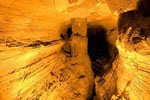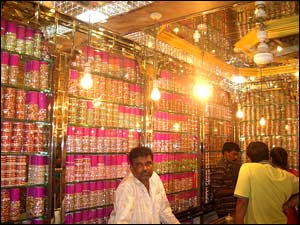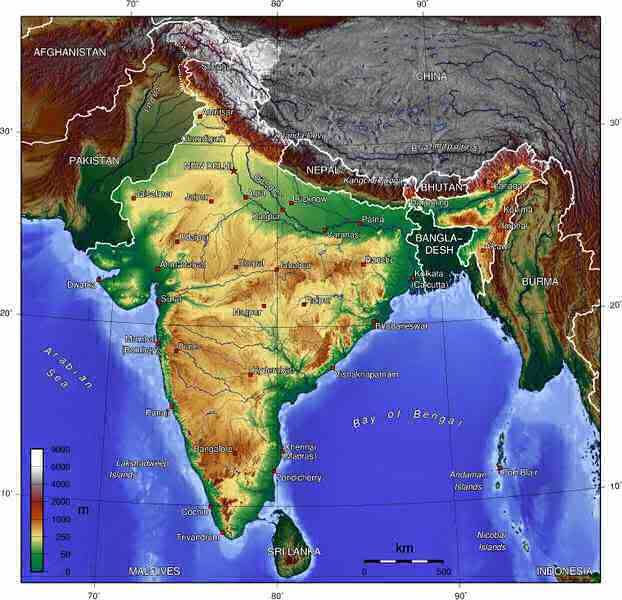
Introduction :
India the seventh largest country in the world , is well marked with off from the rest of Asia by mountains and the sea, which gives the country a distinct geographical entity.It covers an area of 32,87,2631 sq.km. Lying entirely in the northern hemisphere the mainland extends measures 3214 km from north south between extreme latitudes and about 2933 km from east to west between extreme longitudes.It has a land frontier of about 15200 km.
The country lies between 8º4' and 37º6' north of the Equator and is surrounded by the Bay of Bengal in the east, the Arabian Sea in the west and the Indian Ocean to the south.The total length of the coastline of the mainland, Lakshwadeep group of islands and Andaman and Nicobar group of islands is 7,516.5 km. Also,in the east lies the Bangladesh.In the north west Afganisthan and Pakistan border India.The Gulf of Mannar and the Palk Straits separate India from Sri lanka. The Andaman and Nicobar island in the Bay of Bengal and Lakshwadeep in the Arabian sea are parts of the territory of India.There are as many as 200 islands in Andaman alone, extending for 350km.There are 19 island in Nicobar group.
The Arabian sea consist of the Lakshadweep group. They are formed on a coral deposit off the Kerala coast .The southern most of this lies just to the north of the Maldive island which is an independent territory.
The Indian sub-continent is characterised by great diversity in its physical features. It may be divided into following physical units:
Physical Features :
Himalayan Mountain
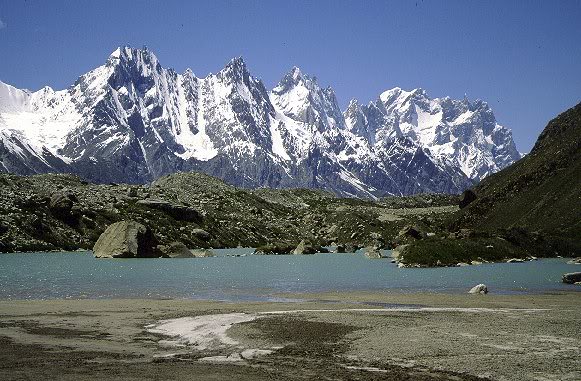
The Himalayas and the associated mountains arcs gridling the sub continent on the stretch in a consistent north west- south east direction for about 2400 km between the gorges of the indus and the Tsango-Bhramaputra.The section between the Indus and the Sutlej and the Kali is termed as Kumaon Himalayas. The other two sections between the Kali and the Tista and between the latter river and the Dihangare described as the Nepal and the Assam Himalayas.Kanchanjunga (8598 Mtrs) is the highest mountain peak in India.The Greater Himalayas which have an average altitude of 6000 m have within them almost all the prominent peaks such the Everest (8848m) , Kanchenjunga (8598m) Nanga Parbat (8126m) ,Nanda devi (7817m) and Namcha parbat (7756m).
The Indus-Ganga-Brahmaputra Plain
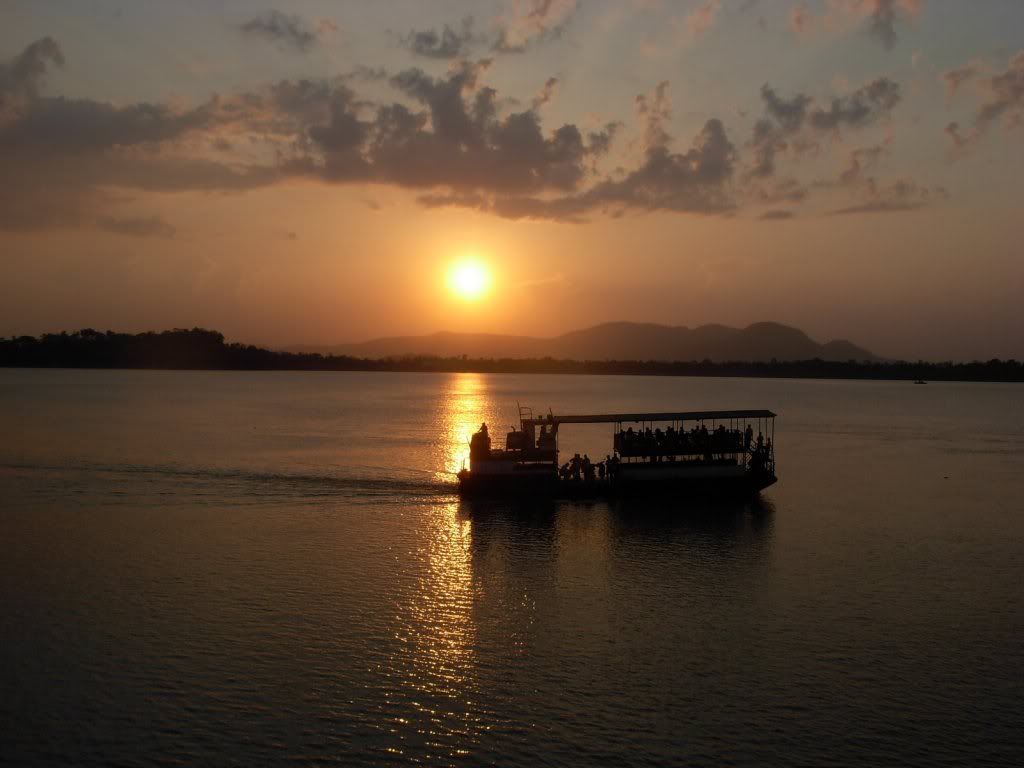
The great plain of india is formed by the Indus, ganga and the Brahmaputra rivers. the plain extends for 3200 km between the mouths of the Ganga and the indus, all along the foot of the mountain rim, with a width varying from 150 to 300 km. The longitudinal extent from the banks of the Ravi and the Sutlej to the ganga delta alone is of 2400km. The plain is narrowest in Assam and broadens towards the west . It is 160 km wide near the Rajmahal Hills and 280 km near Allahabad. The plains are alluvial in nature.
Peninsular plateau

Rising from the alluvial plains of uttar pradesh and Bihar, south of the Yamuna Ganga line, the great indian plateau extends towards the south to encompass the whole of Peninsula. With a general elevation of 600-900m,the plateau makes an irregular tringale with its concave base lying between Delhi ridge and Rajmahal hills and the Apex formed by Kanya Kumari . The outlying projections of the peninsular plateau presented by the Aravallis,Rajmahal and Shillong hills convey some idea of its original northerly limits.
The location of another fragment of the peninsular block in the Shillong plateau gives the indication of the possible connection. The Shillong Plateau a highly dissected and jungly tract, descends in a deep slope towards the Surma valley.The northern outliers are represented by the Mikir and the Rengma hills.
Western ghats
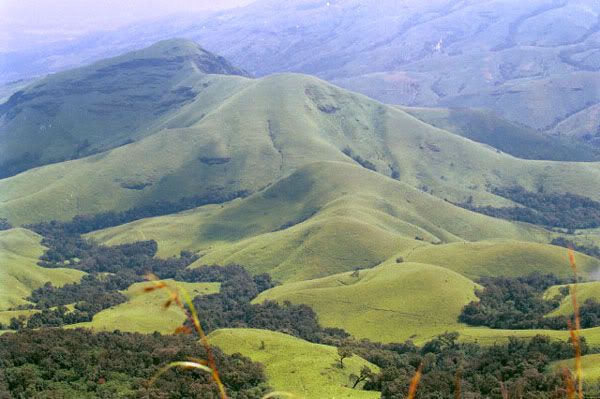
The topography of the Deccan and the Karnataka Plateau is dominated by the Western Ghats, which stretch uninterruptedly to the southern tip of Peninsula.They have a general altitude of 900-1100 m but occassionally rise upto 1600 m or even more.Near Goa the highly dissected relief of the lava rocks is replaced by smoothly rounded hills of Granite and Gnesis.In this stretch the ghats dip but rise once again in the Nilgiris.Further south the continuity of the ghats is distributed by the palghat gap and the Shencottah gap.The Cardamom Hills may be regarded as the continuation of the Western ghats.
Eastern Ghats
The eastern Ghats are generally less impressive than theWestern Ghats and form a discontinous crest on the eastern peripheryof the plateau.They are repesented by an irregular line of hills, such as the Nallamalais, Velikondas,Palkondas and the Pachaimalais. This hills are often referred to as the northern hills in the northern sector,Cuddapah ranges in the middle and the Tamil nadu hills in the south.
The Coastal Plains and the Islands
The plateau is flanked by coastal plains of varid width extending from Kutch to Orissa. There are striking difference between the eastern and the western coastal plains; with notable exception of Gujarat the west coast has narrow alluvial margin interspersed by hillty terrain .It has indentation except in the south where the beautiful Lagoons introduce an element of diversity.
The eastern coast on the other hand has a wide plain with well developed deltas of the major rivers. The climatic transition between the south west monsoon regime of the north and the north -east monsoon regime of the south has given rise to interesting differences in the alluvial features in the two different stretches of the east coastal plain.
River System of India :
The rivers may be classified as follows :
- The Himalayan
- The Deccan
- The Coastal
- The rivers of the inland drainage basin
The Himalayan Rivers
The Himalayan rivers are generally snow-fed and flow throughout the year. During the monsoon months (June to September), the Himalayas receive very heavy rainfall and the rivers carry the maximum amount of water, causing frequent floods.
The Deccan Rivers
The Deccan rivers are generally rain-fed and, therefore, fluctuate greatly in volume. A very large number of them are non-perennial.
The Coastal Rivers
The coastal rivers, especially on the west coast, are short and have limited catchment areas. Most of these are non-perennial as well. The rivers on the inland drainage basin are few and ephemeral.
The Rivers of the Inland Drainage Basin
They drain towards individual basins or salt lakes like the Sambhar or are lost in the sands, having no outlet to the sea.
Others Geographical Facts :
Climate
The Himalayan range in the north acts as the perfect meteorological barrier for the whole country.Even though it falls under Monsoon climatical category, the climate varies from one place to another.Also despite the country's size and its varied relief, the seasonal rhythm of the monsoon is apparent throughout.Some mountains are adjoined to the north by China Nepal and Bhutan.A series of mountain ranges separate India from Burma.Although much of northern India lies beyond the tropical zone, the entire country has a tropical climate marked by relatively high temperatures and dry winters.
Rainfall is very heavy in the north-eastern region, the western slopes of the Western Ghats and parts of the Himalayas, all of which receive over 2,000 mm annually. The eastern part of the peninsula, extending up to the northern plains, receives rainfall varying from 1,000 to 2,000 mm a year, while the area from Western Deccan up to the Punjab plains gets between 100 mm and 500 mm a year. Rajasthan , Kachchh and Ladakh have hardly any rainfall.The population of India crossed the billion mark at the turn of the millennium.
Natural Vegetation
The Himalayan region, which is rich in vegetative life, possesses varieties that can be found practically from the tropical to tundra regions. Only the altitude influences the distribution of vegetation. In the rest of the country, the type of vegetation is largely determined by the amount of rainfall. Outside the Himalayan region, the country can be divided into three major vegetation regions: the tropical wet evergreen and semi-evergreen forests, the tropical deciduous forests, and the thorn forests and shrubs.
Vegetation of the Assam region in the east is luxuriant with evergreen forests, occasional thick clumps of bamboo and tall grasses. The Gangetic plain is largely under cultivation. The Deccan tableland supports vegetation from scrub to mixed deciduous forests. The Malabar region is rich in forest vegetation. The Andaman and Nicobar Islands have evergreen, mangrove, beach and diluvial forests. Much of the country's flora originated three million years ago and are unique to the sub-continent.
Population
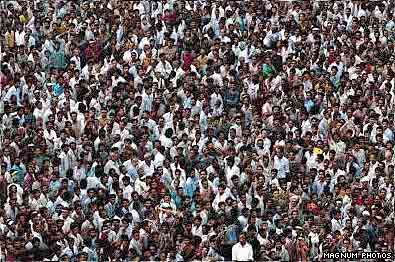
The population of India crossed the billion mark at the turn of the millennium. The mammoth census of 2001 is in the process of being compiled. In 1996, the population was 945 million with 73% in rural areas. In terms of population, India is the world's second-largest country, after China. 16% of the world's population lives in India. The average population density is 320 per sq km (in 1996), though it reaches 6,888 per sq km in the larger cities. In July 2003 it was 1,049,700,118 (est.)
Languages
India, according to a recent census has 1,652 dialects. Needless to say that most of them are only spoken dialects. The principal languages with rich literary heritage are :- Assamese, Bengali, English, Gujarati, Hindi, Kannada, Kashmiri, Malayalam, Marathi, Oriya, Punjabi, Sanskrit, Sindhi, Tamil, Telugu and Urdu.
Natural resources
Coal (Fourth-largest reserves in the world), Iron ore, Manganese, Mica, Bauxite, Titanium ore, Chromite, Natural gas, Diamonds, Petroleum, Limestone, Arable land
Environment-current issues
Deforestation, Soil erosion, Overgrazing, Desertification, Air pollution from industrial effluents and vehicle emissions, Water pollution from raw sewage and runoff of agricultural pesticides, Tap water is not potable throughout the country, Huge and growing population is overstraining natural resources
India is a land of incredible diversity. The diversity of the Indian population is matched by the incredible physical diversity. The sixteen official languages of India, the five major religions, and the caste system create somewhat chaotic conditions for the nation. It dominates South Asian subcontinent; near important Indian Ocean trade routes.



































